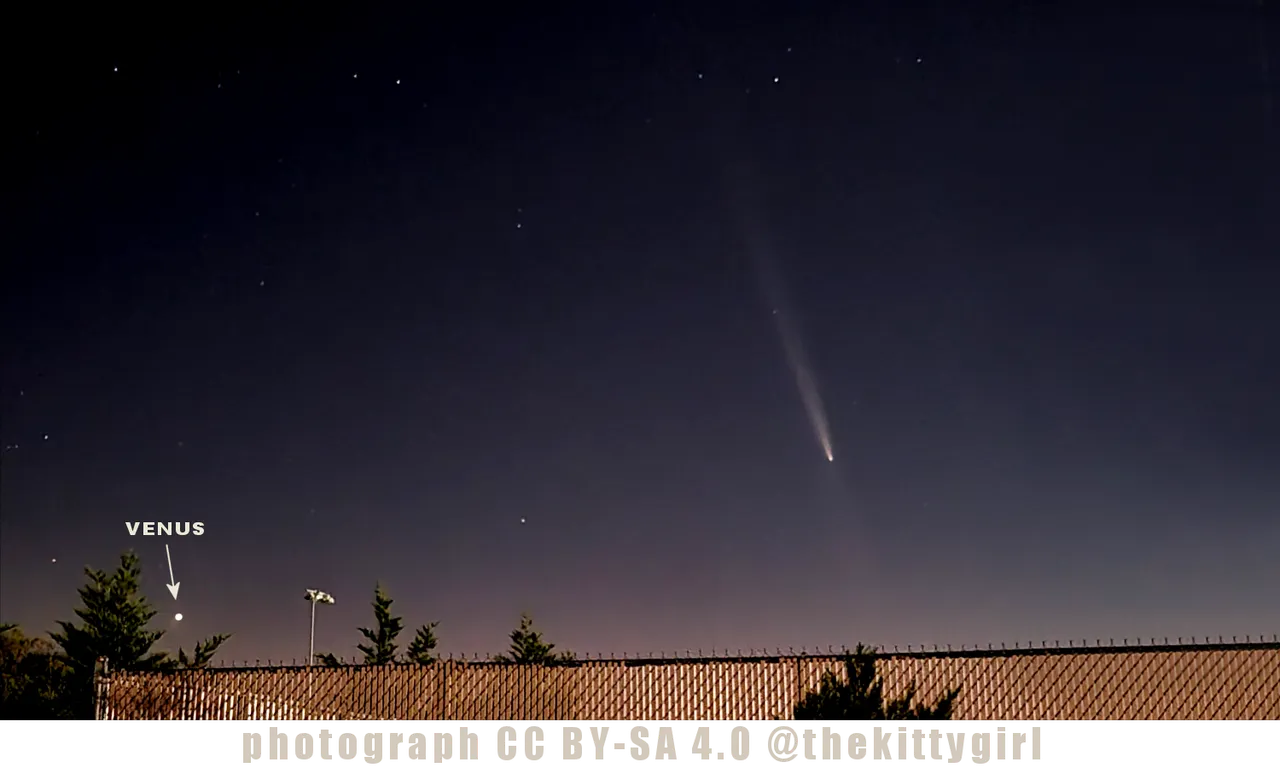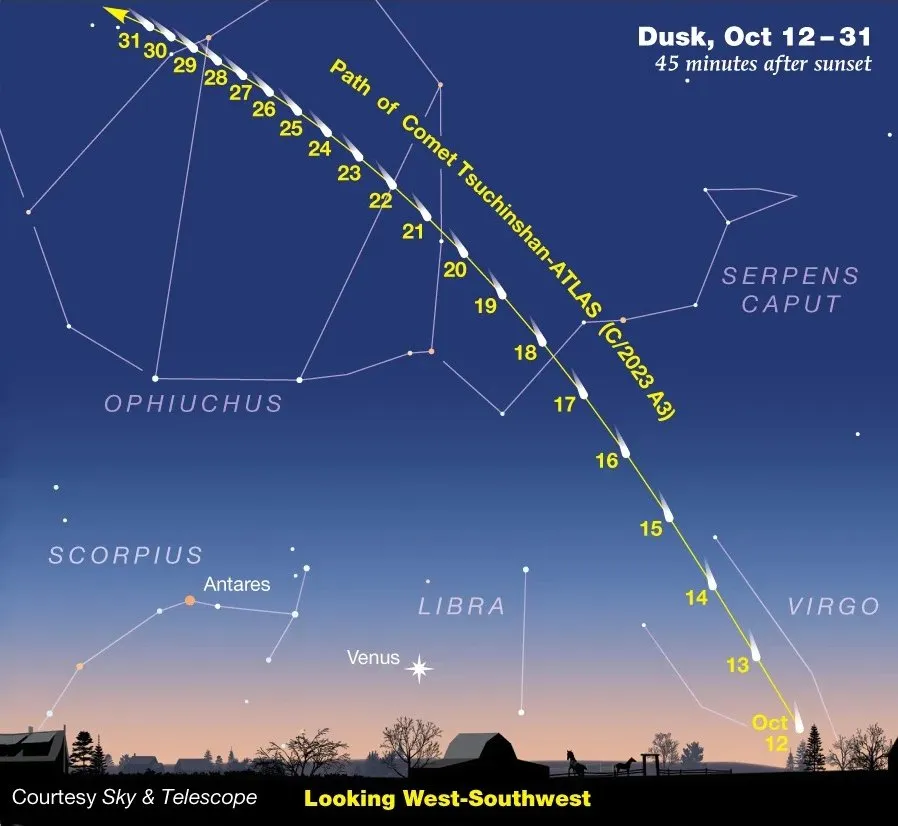In the Jiangsu province of China, there is a city called Nanjing. Near the city is a mountain. Around sunrise and sunset each day, the peak of the mountain is often shrouded in clouds that are tinged purple and gold by the light of the rising/setting sun. Hence, it is known as "Purple Mountain." In English, "Purple Mountain" in the Mandarin language can be rendered as "Tsuchinshan."
There is an astronomical observatory atop Tsuchinshan where the night sky is observed, and many small objects have been discovered there. Among them was a little speck of light which was observed in January of 2023. Orbital calculations were made, but astronomers weren't able to confirm its existence at the time through further observations. One month later, however, the Asteroid Terrestrial-impact Last Alert System (ATLAS) in South Africa spotted an object, and orbital calculations confirmed that it was the same object previously spotted by the Tsuchinshan Observatory. Thus, a new comet was discovered and named C/2023 A3 (Tsuchinshan–ATLAS).
Since its discovery, the object has been slowly approaching the sun. It finally came close-enough to the Earth to be seen by smaller telescopes earlier this year in the morning sky before sunrise. It passed perihelion (its closest approach to the sun) and then reappeared in the evening sky this past weekend.
Comets are made of ice, rock, and dust. When they get close enough to the Sun, some of the ice melts and dust is strewn behind it just like the exhaust from a jet streaking across the sky. This is the "tail" that we see from Earth. Not all comets come close enough for us to see them without big telescopes, but some do. We're fortunate that this one can even be seen with the naked-eye in a somewhat dark location as a "smudge" in the sky. Binoculars will allow a much better view of the object, through.
I went out yesterday evening and was able to see it, a little to the right of the planet Venus, now appearing as a bright "Evening Star" above the western horizon. I could barely see the comet, even with my bad eyesight, without my binoculars, but it was much nicer with my little 8x24 binoculars! I made the following photo with my Samsung® Note20™ cellphone with camera in "Night Mode." If you're reading this via the PEAKD interface, you can zoom-in quite a bit to see the comet better!

Each subsequent night, the comet will be a little higher in the sky and a little fainter, too. It should be easily visible, though, for another week or so, then it will fade to the point that it can only be seen with a small telescope, and eventually only with larger telescopes.
The sky map below will show roughly where to look if any of you wish to try to spot the comet before the end of October 2024. If you see it, please let us know! 🙂

Star Map from: SkyAndTelescope.org
I had hoped to go out again a few hours ago for a second peek at the comet, but there were clouds on the western horizon around sunset. So, maybe tomorrow, but I am glad for the view I got and the lovely photo above!
 😊
😊SOURCES
1 Wikipedia: Comet
2 Wikipedia: C/2023 A3 (Tsuchinshan–ATLAS)
3 Wikipedia: Purple Mountain (Nanjing)
4 Wikipedia: Purple Mountain Observatory












16-Oct-2024